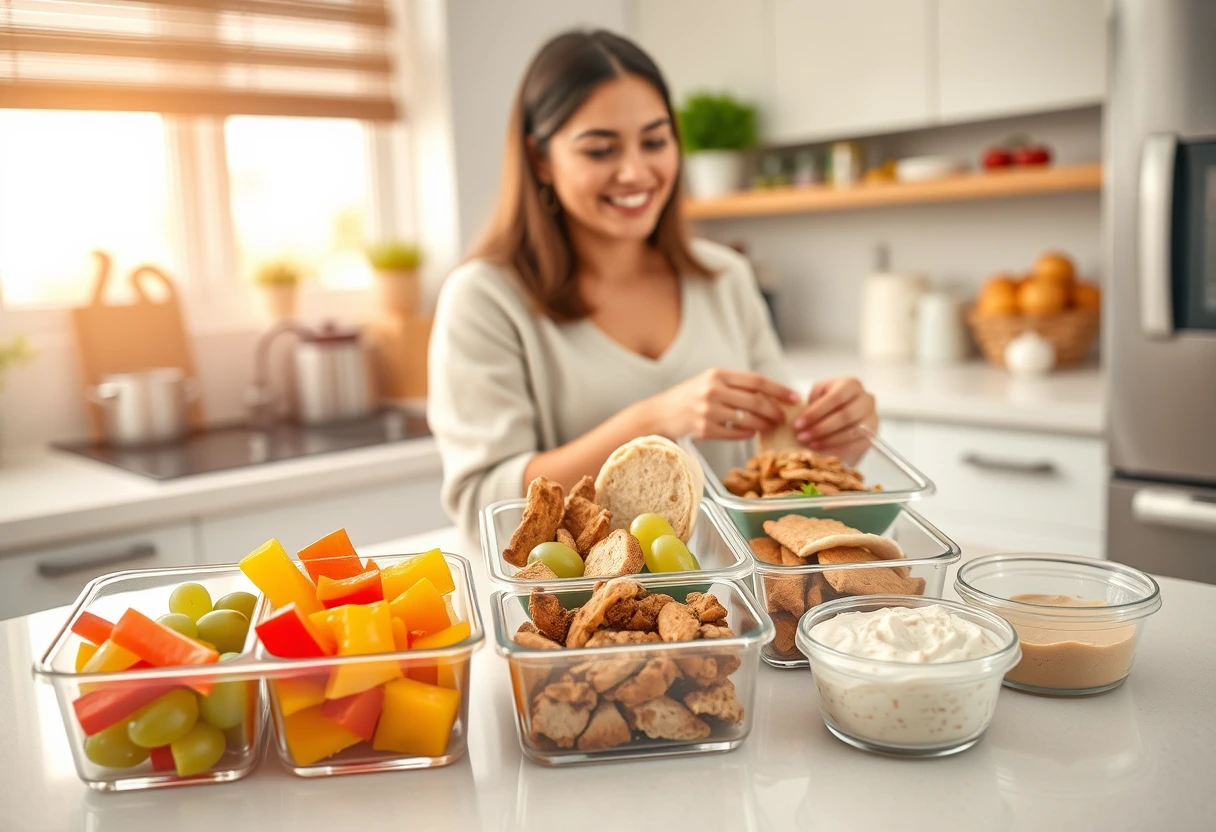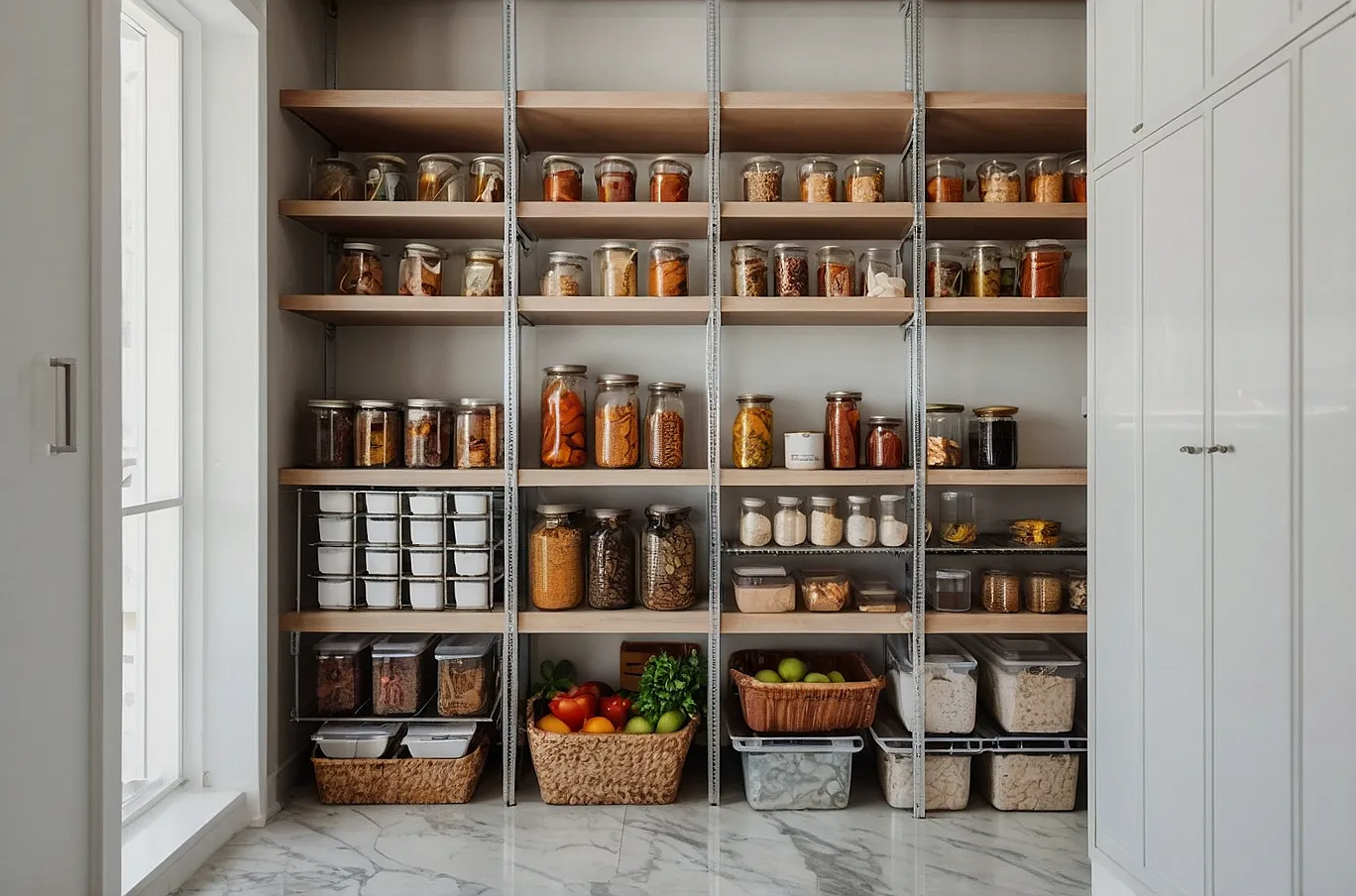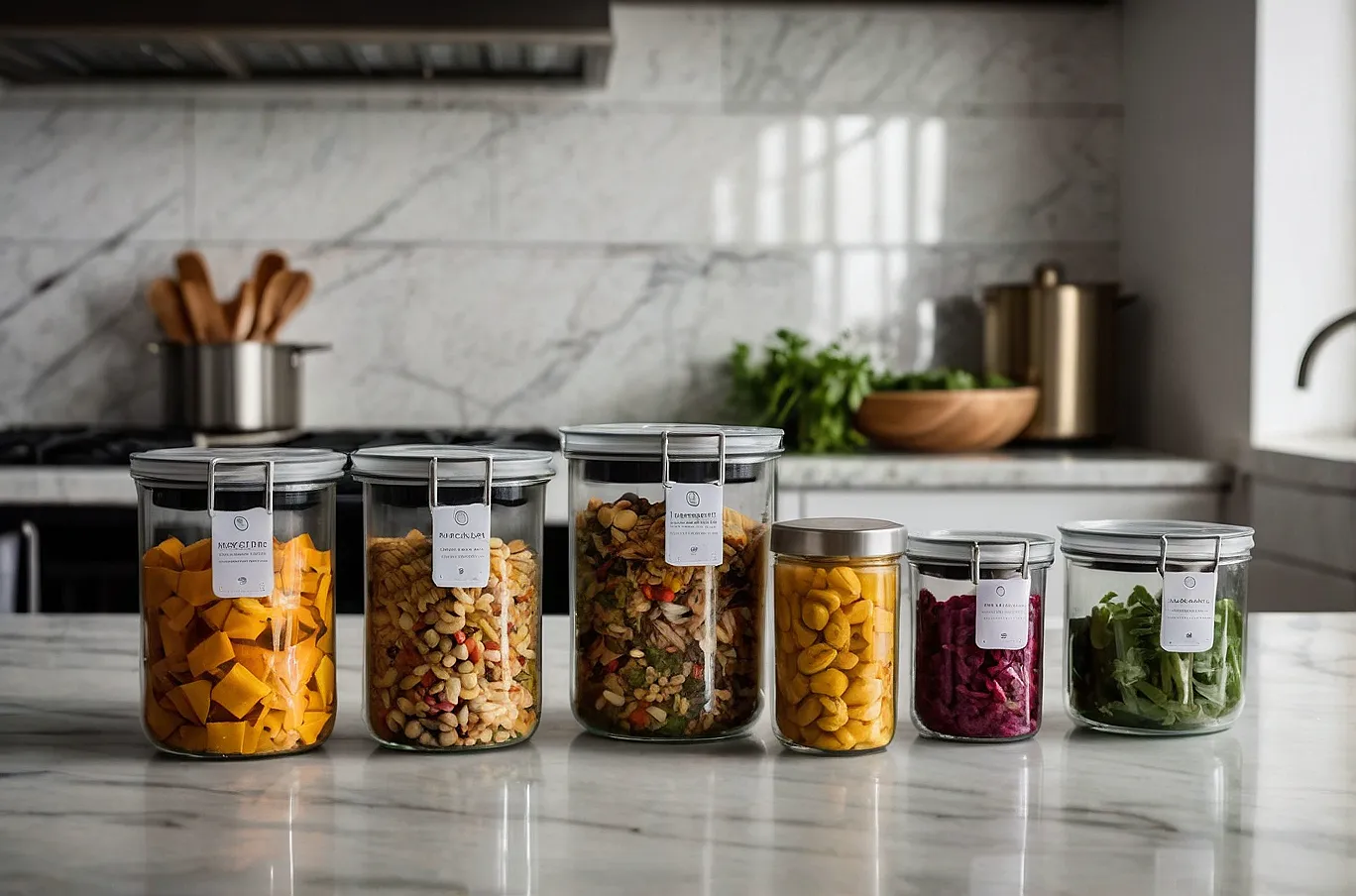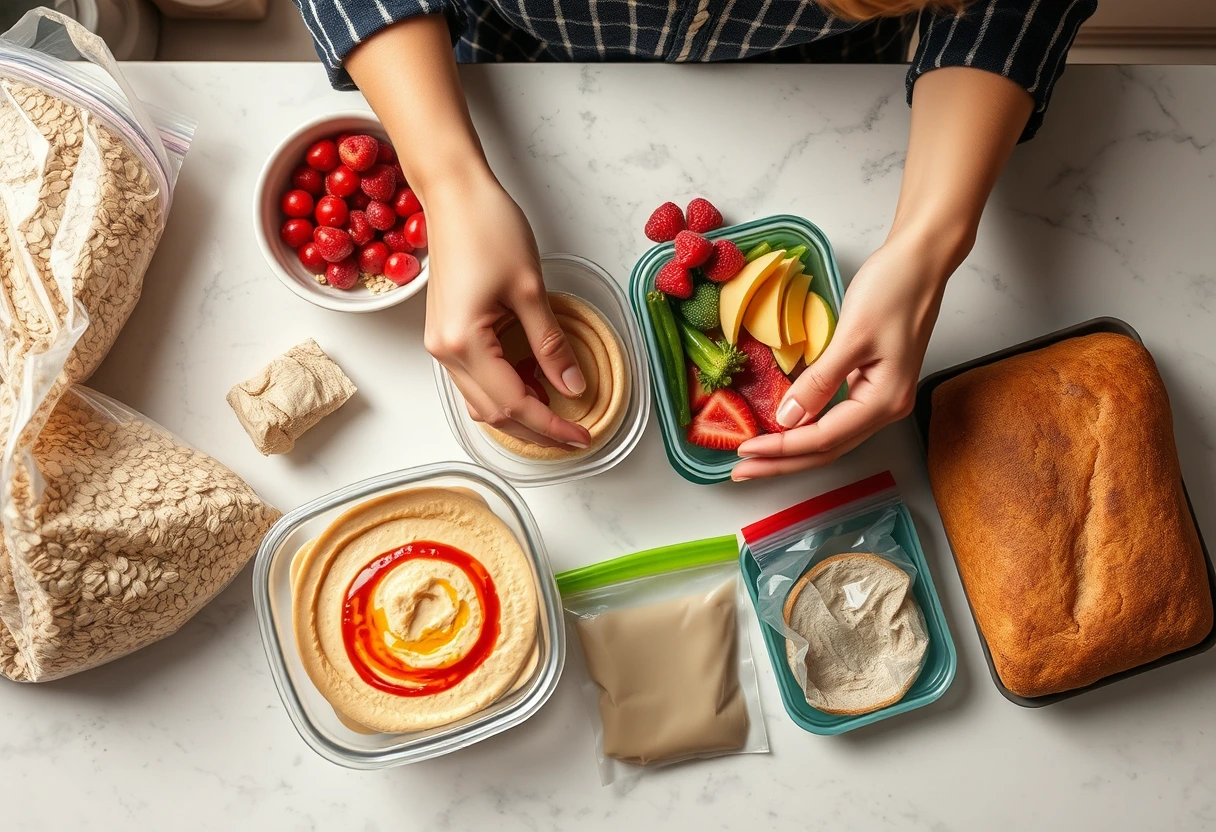 Other
OtherFast Nutritious Lunches for Busy School Days
As a busy mother navigating the whirlwind of school days, you know the morning rush all too well. Between getting everyone dressed, finding matching socks, and making sure homework is packed, preparing a wholesome lunch can feel like an Olympic sport. Yet, providing your children with fast nutritious lunches for busy school days isn't just about ticking a box; it's about fueling their growing bodies and minds for optimal learning and play. A well-balanced lunch keeps energy levels stable, improves concentration, and prevents those afternoon slumps that can turn a sweet child into a cranky one. This guide is your secret weapon, offering practical strategies and delicious recipes to make lunchtime a breeze, even on your most hectic mornings.
Understanding the Nutritional Needs of Growing Kids
Before diving into recipes, it's essential to understand what makes a lunch truly "nutritious" for school-aged children. Their bodies are constantly developing, and their brains are working hard, demanding a consistent supply of macronutrients and micronutrients. A balanced meal should ideally include a mix of complex carbohydrates for sustained energy, lean proteins for growth and repair, healthy fats for brain development, and plenty of vitamins and minerals from fruits and vegetables.
The Power of Balanced Plates
Thinking in terms of balanced plates can simplify lunch packing. Aim for a "rainbow" of colors to ensure a wide array of nutrients. This typically means:
- Protein: Chicken, turkey, ham, tofu, hard-boiled eggs, beans, lentils, cheese.
- Complex Carbohydrates: Whole-wheat bread, whole-grain pasta, brown rice, quinoa, sweet potatoes.
- Healthy Fats: Avocado, nuts, seeds, olive oil, natural nut butters.
- Fruits and Vegetables: A variety of fresh, frozen, or lightly cooked options.
- Dairy or Alternatives: Milk, yogurt, cheese, fortified plant-based milks.
Common Lunchtime Pitfalls to Avoid
Many pre-packaged lunch items marketed to kids are surprisingly low in nutritional value, often loaded with added sugars, unhealthy fats, and sodium. Think beyond the typical processed snacks and sugary drinks. Even seemingly healthy options like fruit juices can be sugar bombs. Opt for whole foods whenever possible, and always read nutrition labels carefully. Avoiding excessive sugar intake and highly processed foods will lay a strong foundation for your child's well-being.
Strategic Meal Prep for Stress-Free Mornings
The key to serving up quick healthy meals is often in the preparation. Spending a little time on the weekend or the night before can save you precious minutes when every second counts on busy school mornings. Meal planning and prepping are crucial components for success.
Thinking ahead about what to pack can transform your mornings from chaotic to calm. It's not about cooking every single component from scratch; it's about smart shortcuts and making double batches of certain items. This approach to ready-to-go lunch ideas will dramatically simplify your routine. Imagine opening the fridge and having pre-cut veggies, cooked grains, or even ready-to-assemble components just waiting for you.
Weekend Warriors: Prepping for the Week Ahead

Dedicate a few hours on a Sunday to tackle these foundational tasks:
- Wash and chop: Carrots, celery, bell peppers, cucumbers, grapes, melon, berries. Store them in airtight containers.
- Cook grains: Prepare a large batch of quinoa, brown rice, or whole-wheat pasta. These can be used as bases for salads, bowls, or mixed with protein.
- Bake proteins: Roast a chicken, hard-boil a dozen eggs, or grill extra chicken breasts. Shredded chicken or sliced eggs are versatile additions.
- Make sauces/dips: Prepare a batch of hummus, healthy salad dressing, or a simple yogurt dip.
- Portion snacks: Divide nuts, seeds, dried fruit, or whole-grain crackers into individual baggies or small containers.
Evening Efficiency: Night-Before Assembly
Even if weekend prep isn't feasible, a few minutes the night before can make a huge difference. Get your kids involved too! They can help choose their fruit or vegetable, or even assemble their own lunch if components are ready.
- Pack non-perishables: Granola bars, crackers, napkins, water bottles.
- Assemble sandwiches/wraps: If ingredients are prepped, this takes minutes.
- Fill thermos: If sending warm food, preheat the thermos with hot water.
- Layout containers: Have all lunch containers, bento boxes, and ice packs ready.
Creative Sandwich and Wrap Alternatives
The classic sandwich is a lunchbox staple, but it doesn't have to be boring! With a little creativity, you can transform it into a exciting and quick nutritious meal. These ideas go beyond the standard ham and cheese, offering innovative ways to pack essential nutrients while keeping things interesting for picky eaters.
Deconstructed and Open-Faced Delights
Sometimes, the bread is the problem for kids, or you simply want to reduce the carb load. Deconstructed lunches are fantastic, allowing kids to assemble their own mini-meals. Open-faced sandwiches also provide a lighter alternative.
- Lunchbox "Sushi": Spread cream cheese or nut butter on a whole-wheat tortilla, layer with thinly sliced turkey, shredded carrots, and spinach. Roll tightly and slice into pinwheels.
- Crackers and Toppings: Whole-grain crackers with individual containers of hummus, sliced cheese, cucumber, or even a small scoop of tuna salad.
- Mini Pita Pockets: Fill small whole-wheat pita pockets with shredded lettuce, diced chicken, and a drizzle of yogurt dressing.
- Open-Faced Avocado Toast: A slice of whole-grain bread topped with mashed avocado, a sprinkle of everything bagel seasoning, and perhaps a few cherry tomato halves.
Wholesome Wrap Innovations
Wraps offer a more flexible canvas than traditional bread slices. They're great for packing in lots of veggies and lean proteins.
- Turkey & Veggie Wrap: Whole-wheat tortilla spread with hummus, layered with sliced turkey, bell pepper strips, and grated zucchini.
- Chicken Caesar Wrap (kid-friendly): Chopped cooked chicken, a handful of romaine lettuce, a sprinkle of parmesan, and a light Caesar dressing (or a yogurt-based dressing).
- Bean & Cheese Burrito: Refried beans, shredded cheese, and a pinch of mild salsa wrapped in a whole-wheat tortilla. Can be eaten cold or warmed in a thermos.
Hearty Bowls and Salads for Sustained Energy
Bowls and salads are incredibly versatile and an excellent way to use up meal-prepped ingredients. They provide a balanced meal that keeps kids full and focused throughout the afternoon. These quick and healthy lunch ideas are perfect for busy schedules.
Layered Jar Salads: Beauty and Convenience

Mason jar salads are not just pretty; they're incredibly practical. Layering prevents greens from getting soggy. The dressing goes on the bottom, followed by sturdy ingredients, then greens.
- Mediterranean Quinoa Salad: Layer a jar with light vinaigrette, cooked quinoa, chickpeas, chopped cucumber, cherry tomatoes, feta cheese, and spinach.
- Chicken and Berry Salad: Dressing at the bottom, followed by cooked chicken, mixed berries, slivered almonds, and mixed greens.
- Tuna Pasta Salad: Small amount of dressing, whole-wheat pasta, canned tuna, chopped celery, bell peppers, and then mixed greens.
Nutrient-Packed Grain and Protein Bowls
These bowls are customizable and perfect for using leftover cooked grains and proteins from your weekend prep. They offer a complete meal in one convenient container.
- Chicken & Veggie Bowl: Base of brown rice or quinoa, topped with roasted chicken, steamed broccoli, and shredded carrots. Drizzle with a light soy-ginger dressing.
- Black Bean & Corn Bowl: Brown rice base, black beans, corn, diced avocado, and a squeeze of lime. Serve with a side of whole-grain tortilla chips for dipping.
- Tofu Scramble Bowl: Cooked quinoa, scrambled tofu with turmeric, bell peppers, and spinach. Great for a hearty vegetarian option.
Creative Uses for Leftovers and Thermos Meals
Don't underestimate the power of leftovers! Repurposing dinner into lunch is one of the easiest ways to ensure your child gets a wholesome, satisfying meal. A good thermos can keep warm food warm and cold food cold, expanding your options significantly for quick nutritious meals.
Repurposing Dinner into Delightful Lunches
Many dinner dishes can be easily transformed or simply portioned out for the next day's lunch. This is a time-saving strategy for families seeking efficiency.
- Pasta Dishes: Leftover whole-wheat pasta with marinara sauce, meatballs, or chicken can be reheated in a thermos.
- Stir-fries: Chicken or tofu stir-fry with rice or noodles.
- Soups and Stews: Hearty vegetable soup or lentil stew stays warm in a thermos until lunchtime.
- Pizza Pinwheels: Leftover pizza can be cut into smaller pieces or even rolled up into pinwheels (if thin crust) and eaten cold or slightly warmed.
Thermos Magic: Keeping Meals Just Right
A good quality insulated food jar (thermos) is an essential tool for packing a wide variety of meals. Remember to preheat it with boiling water for 5-10 minutes before adding hot food, and chill it with ice water for cold items.
- Warm Mac and Cheese: Whole-wheat macaroni and cheese is a kid-favorite.
- Mini Meatballs & Marinara: Small meatballs (turkey or beef) in a simple marinara sauce.
- Breakfast for Lunch: Warm oatmeal with berries and nuts, or mini pancakes/waffles.
- Chilled Yogurt Parfait: Layers of yogurt, granola, and berries for a cold, refreshing option.
Snack Smarts: Beyond the Lunchbox
Lunches are crucial, but snacks play an equally important role in keeping kids energized and focused throughout the school day. Smart snacking can prevent overeating at meals and provide necessary nutrients between lunch and dinner. For young, busy mothers, having easy and healthy snack options on hand is a game-changer.
It's about choosing options that complement the main meal, providing sustained energy rather than a sugar rush. Think of snacks as mini-fuel-ups for busy school days.
Fueling Little Bodies: Smart Snack Choices
Avoid processed snack foods that are high in sugar and unhealthy fats. Focus on whole, nutrient-dense options:
- Fruits: Apples slices with a sprinkle of cinnamon, banana, orange segments, grapes, berries.
- Vegetables: Carrot sticks, cucumber slices, bell pepper strips with hummus or a yogurt dip.
- Dairy: String cheese, Greek yogurt (plain with fruit added), cottage cheese.
- Protein & Healthy Fats: A handful of nuts (if no allergies), seeds, roasted chickpeas, hard-boiled eggs, edamame.
- Whole Grains: Whole-grain crackers, air-popped popcorn, homemade whole-grain muffins.
Hydration: The Unsung Hero
Often overlooked, adequate hydration is vital for concentration and overall well-being. Water is always the best choice. Avoid sugary drinks like juice boxes, sodas, and sports drinks. Send a reusable water bottle that can be refilled throughout the day.
Infused water with slices of cucumber, lemon, or berries can make hydration more appealing without adding sugar. Staying well-hydrated is a simple yet powerful strategy for children's health, complementing their fast nutritious lunches for busy school days.
Addressing Picky Eaters and Allergy Concerns
Packing lunch for children can be challenging, especially when dealing with picky eaters or specific allergies. Don't despair! With a bit of strategy, you can create appealing and safe meals that your child will actually eat.
Strategies for Picky Eaters
It can be frustrating when your carefully prepared healthy lunch comes home uneaten. Try these tactics:
- Involve them: Let your child help choose what goes into their lunchbox. When they have a say, they're more likely to eat it.
- Deconstruct meals: Offer components separately. Instead of a sandwich, pack bread, cheese, and turkey slices.
- Dip it: Kids love to dip! Provide healthy dips like hummus, yogurt, or a mild salsa with veggies or crackers.
- Cookie cutters: Make sandwiches or fruit shapes with cookie cutters. Fun shapes make food more appealing.
- Small portions: Don't overwhelm them. A small amount of a new food alongside familiar favorites.
- Consistency: Keep offering new foods without pressure. It can take many exposures for a child to accept a new food.
Navigating Food Allergies and Sensitivities
School environments are increasingly vigilant about food allergies. Always communicate with your child's school and teacher about any dietary restrictions.
- Read labels carefully: "Nut-free," "dairy-free," or "gluten-free" labels are your friends. Cross-contamination is a serious concern.
- Pack safe alternatives: If your child has a dairy allergy, opt for fortified plant-based yogurts and milks. For nut allergies, sunflower seed butter is a great alternative to peanut butter.
- Communicate with school: Ensure the school staff is aware of the allergies and has an action plan in place.
- Educate your child: Teach them not to share food and to be mindful of what they eat.
Meal prep for kids with allergies requires extra diligence but is entirely manageable with consistent effort. Focusing on whole, unprocessed foods naturally reduces exposure to common allergens present in many processed products. Ensuring quick and healthy meals for kids with special dietary needs is a testament to mindful parenting.
Budget-Friendly and Sustainable Lunch Ideas
Eating healthy doesn't have to break the bank, nor does it have to generate excessive waste. With a few smart choices, you can pack delicious, nutritious lunches that are kind to your wallet and the planet.
Saving Pennies, Not Nutrients

The cost of convenience can quickly add up. Making lunches at home is almost always cheaper than buying school lunch or pre-packaged items. Here's how to maximize your budget:
- Buy in bulk: Grains, nuts, seeds, and dried fruits are often cheaper when purchased in larger quantities.
- Seasonal produce: Fruits and vegetables are less expensive and taste better when they're in season.
- Cook from scratch: Homemade muffins, granola bars, and dips are cheaper and healthier than store-bought versions.
- Utilize leftovers: As mentioned, repurposing dinner is a fantastic money-saver.
- Plant-based proteins: Lentils, beans, and chickpeas are inexpensive and packed with protein.
Eco-Conscious Lunch Packing
Reduce waste by opting for reusable items over single-use plastics.
- Reusable containers: Invest in a good set of bento boxes, stainless steel containers, or glass jars.
- Silicone pouches: Great for snacks like crackers or fruit slices, replacing plastic baggies.
- Reusable water bottles: Eliminate the need for disposable plastic bottles.
- Cloth napkins: Washable and sustainable alternative to paper napkins.
- Avoid pre-packaged snacks: Buy larger bags of snacks and portion them into reusable containers yourself. This also usually saves money.
Adopting sustainable practices for packing quick and healthy lunchboxes for kids not only benefits the environment but also often leads to healthier eating habits and long-term savings.
Making Lunchtime Fun and Engaging
A visually appealing and varied lunchbox is more likely to be eaten, especially by younger children. Beyond nutrition, making lunch an enjoyable experience can foster a positive relationship with food.
Presentation Matters: Bento Box Inspiration
Bento boxes, with their multiple compartments, are perfect for separating food items and preventing sogginess. They also encourage variety and a balanced meal.
- Color contrast: Use a variety of colorful fruits and vegetables.
- Fun shapes: Use cookie cutters for sandwiches, cheese, or fruit slices.
- Small skewers: Create mini fruit or veggie skewers (for older kids).
- Miniature containers: Use tiny containers for dips, dressings, or small treats.
- A little note: A sweet or encouraging note can brighten their day.
Encouraging Independence and Exploration
Empowering children to participate in the lunch packing process fosters independence and can make them more invested in eating what they've helped prepare. It’s a wonderful way to teach them about healthy food choices.
- Let them choose: Offer two healthy options for a fruit or vegetable, and let them pick one.
- Help assemble: For older kids, let them spread their own hummus or fill their own wraps from pre-prepped ingredients.
- Taste tests: Introduce a new fruit or vegetable by having a family taste test at dinner. If they like it, it might make it into the lunchbox.
- Talk about food: Discuss where food comes from, what it does for their bodies, and why certain foods are healthy.
By making fast nutritious lunches for busy school days an interactive and enjoyable part of your routine, you're not just providing sustenance; you're nurturing healthy habits that will last a lifetime.
